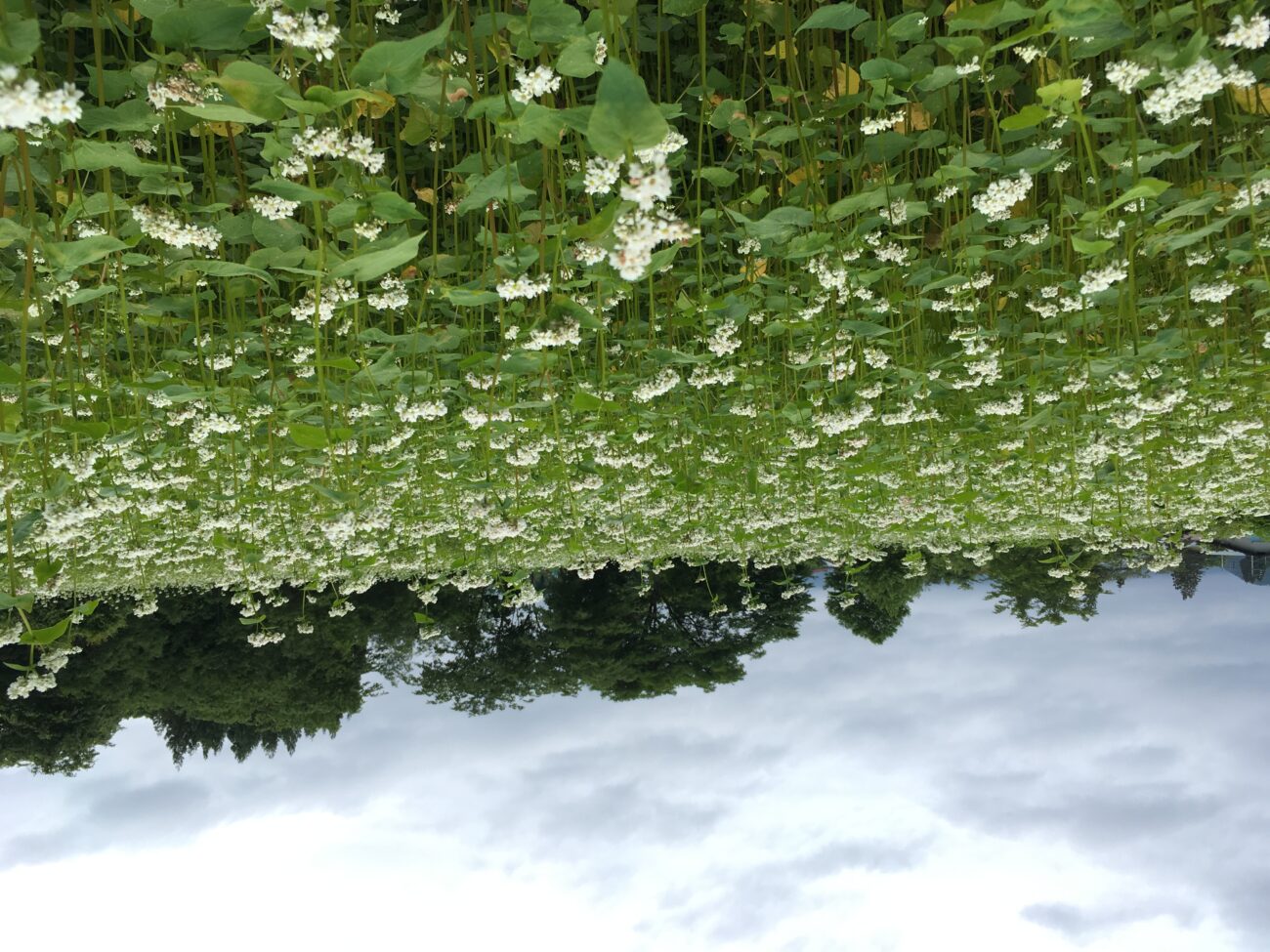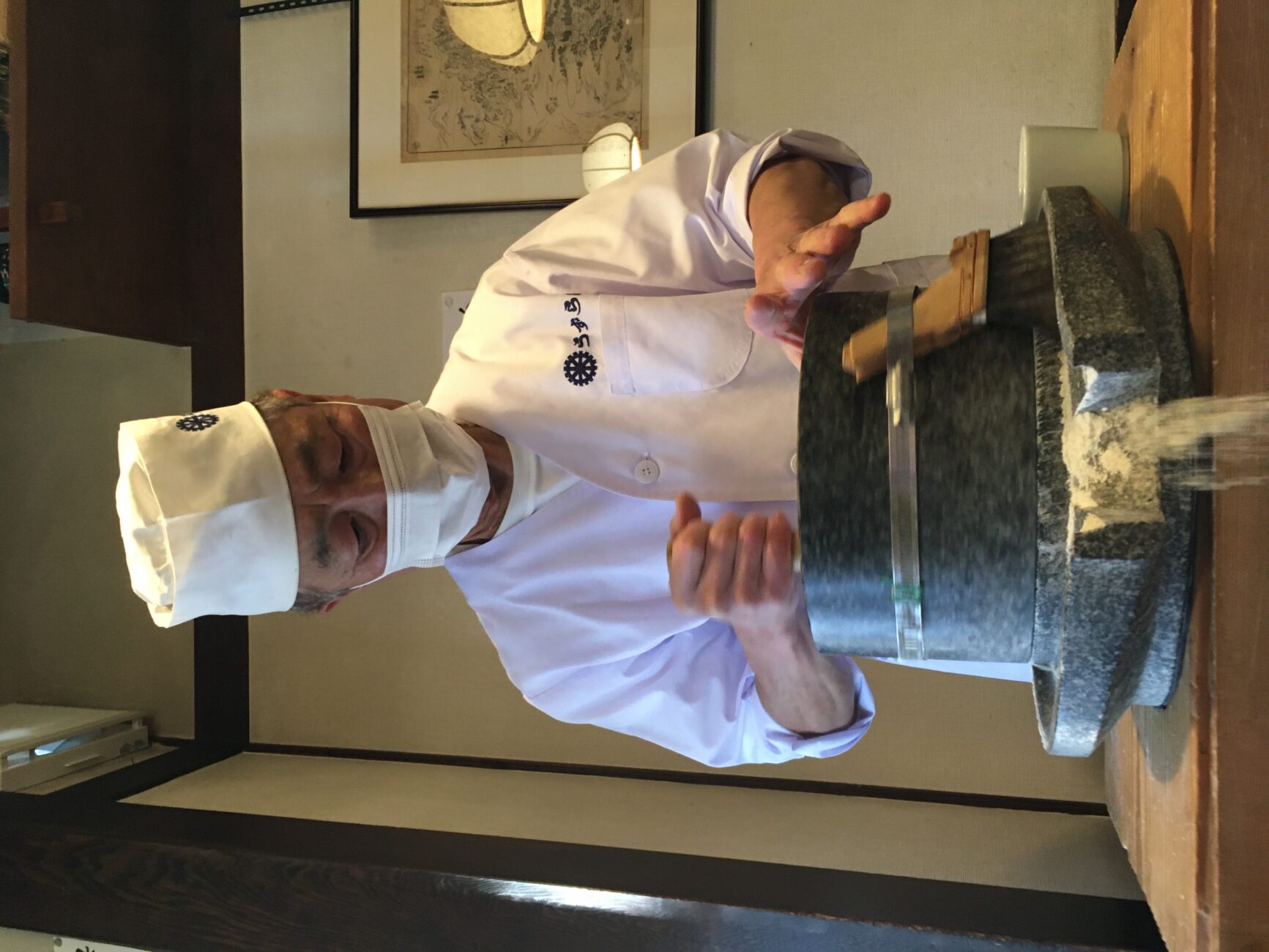The history of soba in Togakushi dates back to the Heian period (794-1185), when it served as the provisions for ascetic monks who trained in the mountains. Made from buckwheat, soba originally bore little resemblance to its present-day form. The soba flour was simply mixed with water, making a dough that could be easily carried throughout a day of training. It is believed that eventually soba dough was kneaded into dumplings, and the kneaded dough was grilled to make soba mochi.
In the Edo period (1603-1867), the technique of making noodles was introduced to Togakushi by a monk from Edo (present-day Tokyo). Shukubo inns started serving soba noodles to visiting pilgrims who stayed, and over time this became the custom at shukubo throughout Togakushi.

Togakushi soba noodles are highly regarded as one of the most notably delicious brands among the many produced all over Japan. One of the reasons for their popularity is that Togakushi has a natural environment well-suited to soba production. Togakushi‘s highland cold climate and extreme temperature difference are perfect for growing soba, providing it with rich flavors. High-altitude fields are often foggy, and soba from around Togakushi is called “fog soba” (kirishita soba in Japanese). Fog soba is famous for having the best taste, color, and aroma.

Soba noodles in Togakushi are usually served on a bamboo tray in five coiled portions, which represent the five shrines of Togakushi. This serving style is known as “bochi mori,”
and it is unique to Togakushi. Togakushi’s soba chefs have traditionally grown and produced their own soba, harvesting in August and October. The bamboo trays on which soba is served are made entirely by hand with the local craft known as Togakushi takezaiku.

You can try original Togakushi soba at more than 40 restaurants in the area. You can even try making soba yourself at places like Tonkururin.



